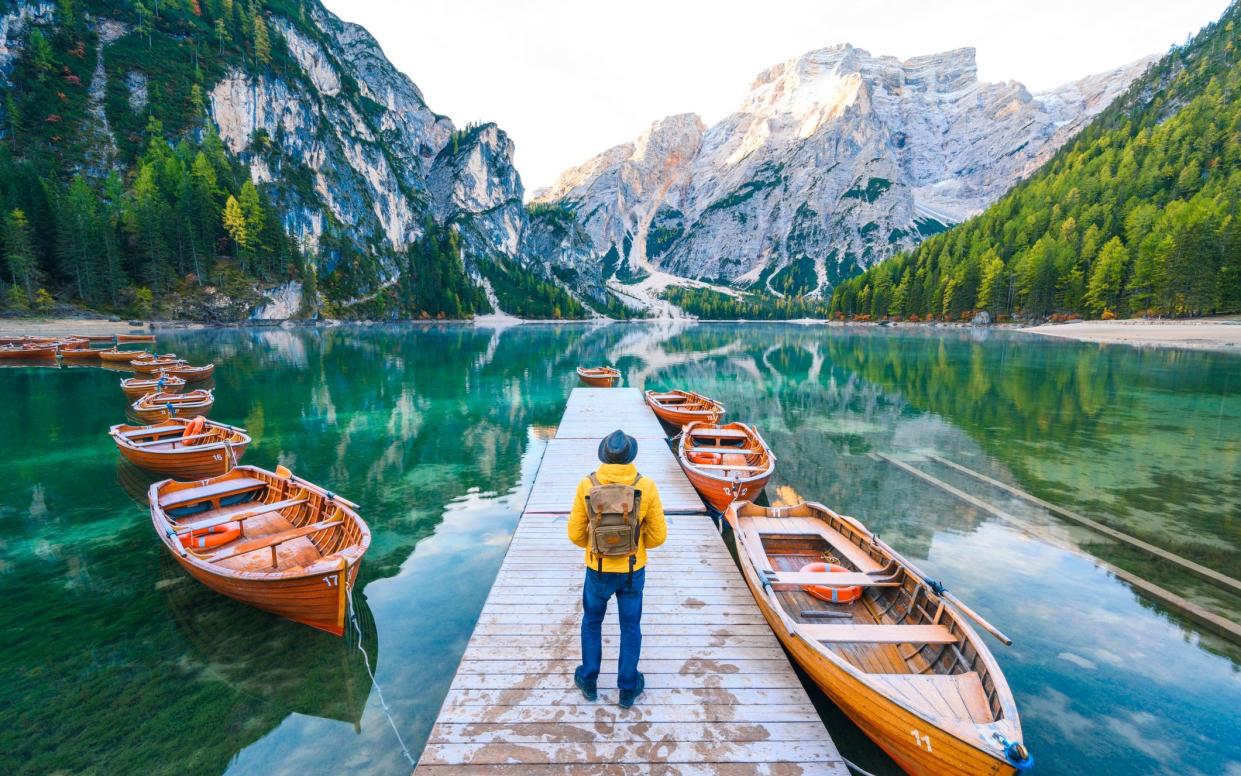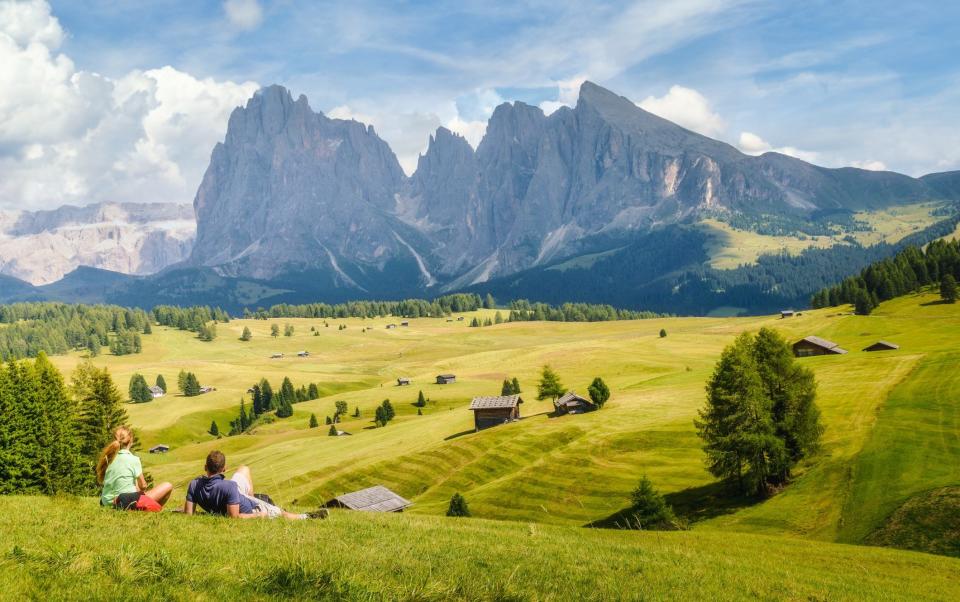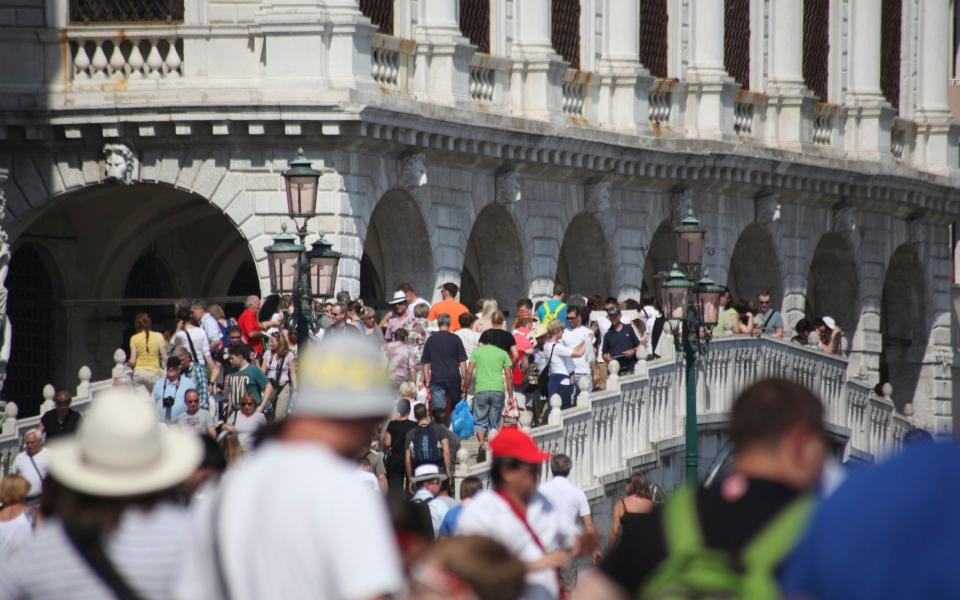This Italian region is turning away tourists, and Cornwall could be next

As Cornwall braces itself for another summer of traffic jams, overrun beaches and bottlenecks at popular sites, local authorities may wish to turn to a remote Italian region for inspiration on how to handle things.
The region of Trentino Alto Adige, bordering Austria and Switzerland, is capping tourist numbers this summer after it has “reached the limit” of how many visitors it can handle, according to tourism minister Arnold Schuler.
The northerly region, home to the Dolomites range and the glacial Lago di Braies (Pragser Wildsee), received 34 million visitors in 2022. The resident population is just over 1 million.
The tourism boom has helped with the area’s post-pandemic recovery – Italy had one of the longest and harshest lockdowns in Europe – but some locals have taken a different view. The area’s growing popularity has led to traffic jams and a shortfall of affordable housing, with queues forming at the tourist sites with the highest footfall.
Under the new rules, from July 10 to September 10, people hoping to visit the photogenic Lago di Braies in their own vehicle will have to apply for an online permit. Everybody else will have to travel by public transport, on foot or by bike between 9am and 4pm. This, local authorities hope, will help to reduce queues on the roads and prevent overcrowding on the footpaths around the lake.
Access to the alpine meadow of the Alpe di Siusi has also been restricted, with private vehicles banned between 9am and 5pm. Anyone planning to visit the meadow will have to travel using public transport (with limited capacity), instead.

Minister for Tourism, Arnold Schuler, said: “Tourists come here to hike and to see beautiful places, not to find themselves in a traffic jam. The tourism sector is very important for us, for jobs and the economy, but we had reached the limit, so we took these measures to guarantee a better management of the flow of people, and to guarantee lodging for tourists.”
Trentino-Alto Adige isn’t the only destination taking action to manage visitor numbers. In April this year, the Japanese island of Okinawa imposed a cap of 1,200 visitors per day in a drive to prevent degradation of the island’s natural sights. The local government will also limit visitor numbers to its World Heritage Sites where there are endangered species, with limits varying from 30 to 200 people per day.
Elsewhere in Italy, Venice has long threatened charging day trippers and capping the number of daily visitors at 40,000. In 2022 the local authorities announced day-trippers would need to pay between €3 and €10, depending on how busy the city is on that day. It is not clear whether this will come into effect for the 2023 summer season, but it seems likely it will be in force by 2024.

The Inca ruins of Machu Picchu in Peru has a daily limit, too, requiring visitors to arrive in designated time slots. This came after the World Monuments Fund in 2008 placed the site on its watch list of 100 Most Endangered Sites due to environmental degradation. At the time, the Peruvian government and Unesco agreed to cap daily visitor numbers at 2,500, although that number will rise to just over 4,000 per day in 2023.
So could Cornwall apply a similar tactic? The county receives more than 5 million visitors per year, multiplying the population tenfold, and suffers from many of the classic symptoms of overtourism. Malcolm Bell, executive chair of Visit Cornwall, says action is required.
“Overtourism is no good for the visitors and more importantly local communities. During the Covid years there were many instances of ‘visitor wants’ and ‘residents’ values’ mismatching, which was not the case before 2020,” said Bell. He believes that the focus, first and foremost, should be on the regulation of accommodation.
“It is important to ensure that we manage tourism effectively and the urgent first step is to introduce statutory registration from every accommodation provider be they traditional or the new entrants on online platforms,” he said. “This will firstly reduce the volume of casual providers who do not comply with the existing regulations, but also provide the key data to see if licensing or planning controls should be introduced.”
Visit Cornwall has long stopped promoting the most overrun spots in the county, and is this year trying to direct tourists to less-visited areas like South East Cornwall, Bude, and inland towns that are often overlooked. They are also promoting wildlife experiences at little-known spots, like Boconnoc and Gweek.

But if their efforts fall flat further action could be required, for high tourist numbers can put a strain on vital services in the region, like the Royal National Lifeboat Institute (RNLI). A spokesperson for the RNLI told Cornwall Live “We are prepping for a busy summer ahead” after a series of rescues in April and May. In 2022 the RNLI attended a total of 6,995 incidents in Cornwall, saving 23 lives.
If capacity limits or pre-registration systems were imposed, the focus would likely be on the natural beauty hotspots along the coast. Porthcurno and Kynance Cove regularly see excessive footfall in the summer season, with the National Trust car parks quickly reaching capacity and gridlocks forming on the approaching narrow lanes. Perranporth, Fistral Beach and Polzeath also attract thousands of visitors per day in the summer.
Could it work in Cornwall? One popular visitor site is already taking action along these lines.
“At the Minack we cap visitor numbers and encourage advance booking on a timed entry system to alleviate traffic congestion on our narrow roads, especially at peak times. This works well for us but would be much more difficult to manage for open access areas like beaches,” said Zoë Curnow Executive Director The Minack Theatre.
But without some form of action, everyone will lose in the end, says Justin Francis of Responsible Travel.
“When we travel, we become a guest in someone else’s home. When our holidays start to negatively impact a destination, steps should be taken to protect it,” he said.
“No matter how well tourism is managed, every destination has a limit to the number of visitors it can take before local people’s quality of life is eroded, and the visitor experience too.”


